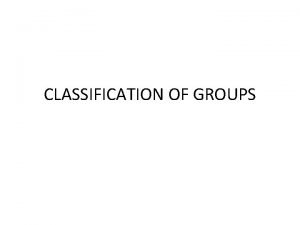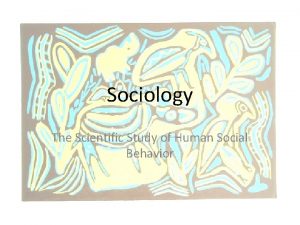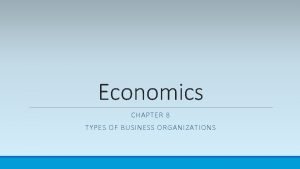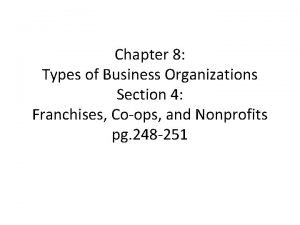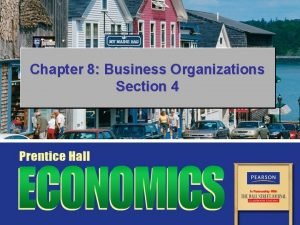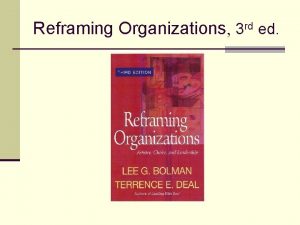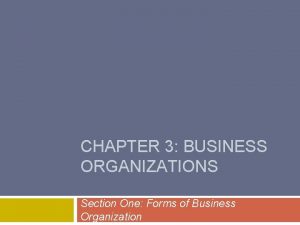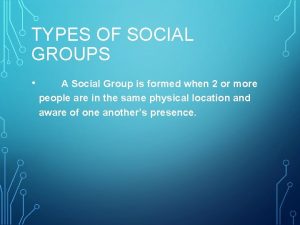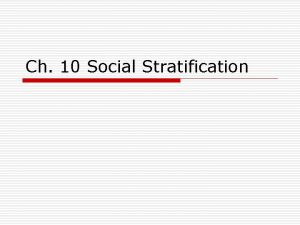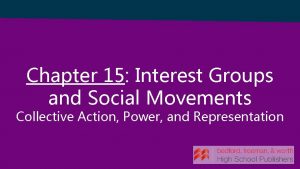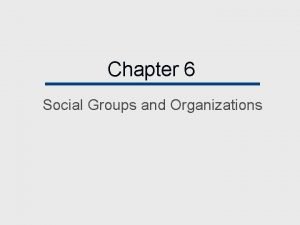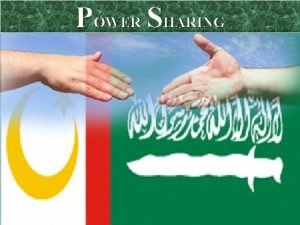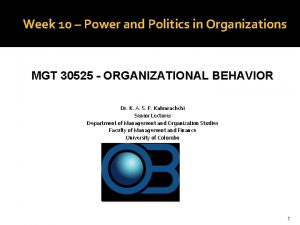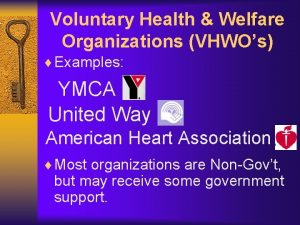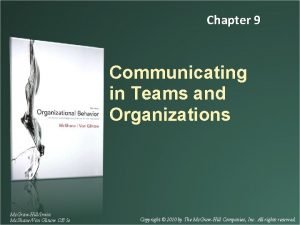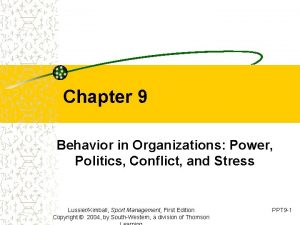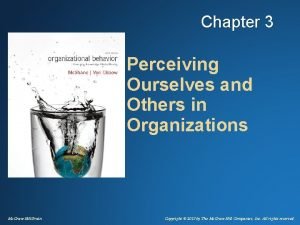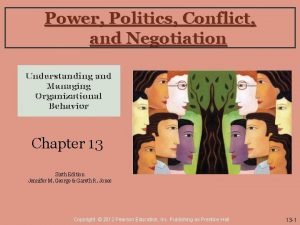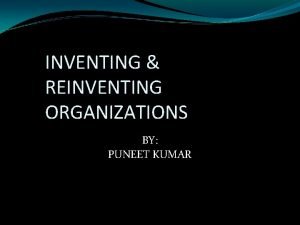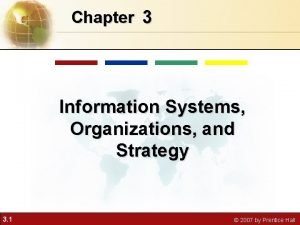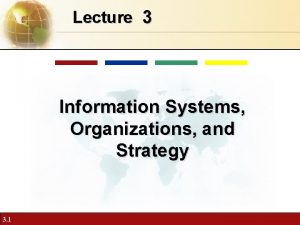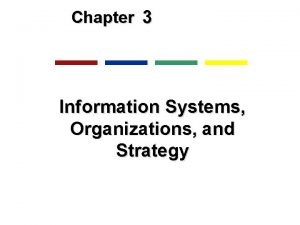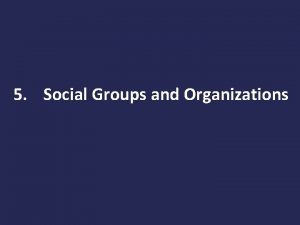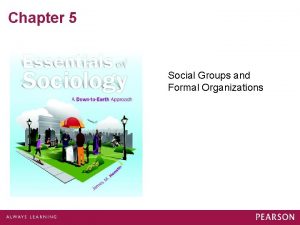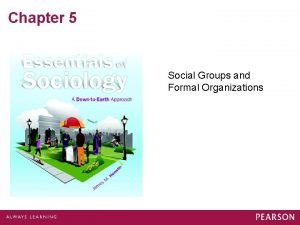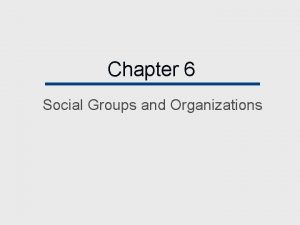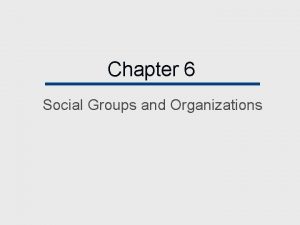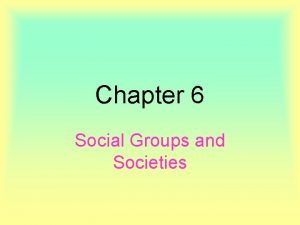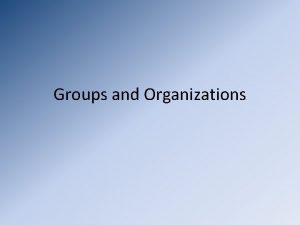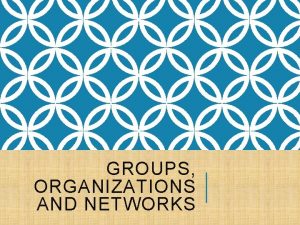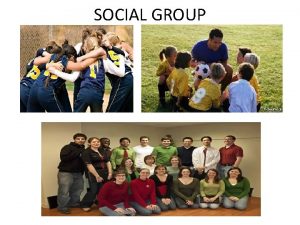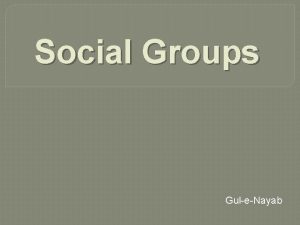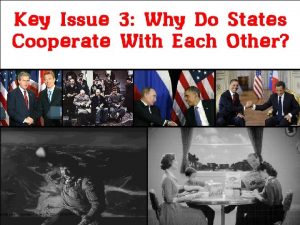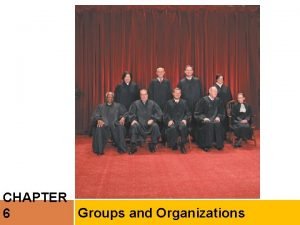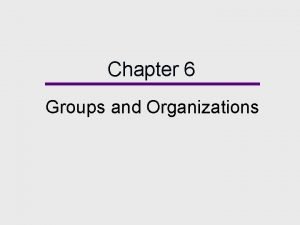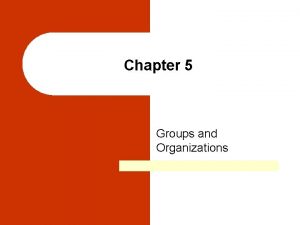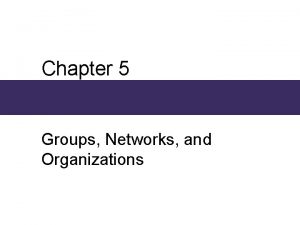Chapter 6 Groups and Organizations Chapter Outline Social








































- Slides: 40

Chapter 6 Groups and Organizations

Chapter Outline § § § Social Groups Group Characteristics and Dynamics Formal Organizations in Global Perspective Alternative Forms of Organizations in the Future

Social Groups A collection of two or more people who: § Interact frequently. § Share a sense of belonging. § Have a feeling of interdependence.

How Much Do You Know About Privacy in Groups? § True or False? § Parents of students at U. S. colleges and universities are entitled to a transcript of their children’s college grades, regardless of the student’s age.

How Much Do You Know About Privacy in Groups? § False § The Family Educational Right to Privacy Act, which allows parents of a student under 18 to obtain their child’s grades, requires the student’s consent once they are 18; however, that law applies only to institutions that receive federal educational funds.

How Much Do You Know About Privacy in Groups? § True or False? § Students at a church youth group meeting who hear a member of the group confess to an illegal act can be required to divulge what that member said.

How Much Do You Know About Privacy in Groups? § True. § Although confidential communications made privately to religious leader cannot be divulged without the consent of the person making the communication, this does not apply when other people are present who are likely to hear the statement.

Aggregates and Categories § § Aggregates happen to be in the same place at the same time: § Airline passengers, shoppers, waiting at a traffic light Categories share a similar characteristic: § Students, elderly, Native Americans

Cooley’s Primary and Secondary Groups Primary group Emotion-based interaction over extended period. Secondary group Impersonal, goal-oriented relationships for a limited time.

Question § If an organization in your community suggested that a book written by an atheist against churches and religion should be taken out of your public library, how likely would you be in favor of removing this book? a. Very likely b. Somewhat likely c. Unsure d. Somewhat unlikely e. Very unlikely

Sumner’s Ingroups and Outgroups Ingroup Outgroup Group to which a person belongs and feels a sense of identity. Group to which a person doesn’t belong and feels a sense of hostility towards.

Reference Group § § Influences a person’s behavior and attitudes, regardless of whether they are a member. We may act more like members of a group we want to join than members of groups to which we already belong. § In this case, reference groups are a source of anticipatory socialization.

Question § How likely would you be to join an organization where membership is determined by race? a. Very likely b. Somewhat likely c. Unsure d. Somewhat unlikely e. Very unlikely

Group Size Dyad Group composed of two members. Triad Group composed of three members. Highly structured secondary group Formal formed for the purpose of organization achieving specific goals

Possible Interactions Based on Group Size

Group Leadership Functions § § Instrumental leadership is most appropriate when the group’s purpose is to complete a task or reach a particular goal. Expressive leadership is most appropriate when the group is dealing with emotional issues, and harmony, solidarity, and high morale are needed.

Group Leadership Styles § § § Authoritarian leaders - often criticized for fostering intergroup hostility. Democratic leaders - praised for supportive behavior and blamed for being indecisive in a crisis. Laissez-faire leaders - do not provide active leadership.

Asch’s Research § § Asch’s research assistants tried to influence participants to pick Line 1 or 3 as the match for the line in the lower card. Many went along rather than risk the opposition of the “group. ”

Milgram’s Obedience Experiment: Results


Types of Formal Organizations Normative Coercive Utilitarian Organizations we join voluntarily to pursue a common interest or gain prestige. Associations people are forced to join. (Example: boot camps and prisons) Organizations we join voluntarily when they can provide us with a material reward.

Characteristics and Effects of Bureaucracy

Alternative Forms of Organization “Humanizing” the bureaucracy: 1. Greater sharing of power and responsibility. 2. Encouragement of participants to share their ideas and try new approaches. 3. Efforts to reduce the number of people in dead‑end jobs and to help people meet family responsibilities.

Horizontal Model for Corporations – Key Elements § § § Work is organized around “core” processes, not tasks. Hierarchy is flattened. Teams manage everything and are accountable for measurable goals.

Horizontal Model for Corporations – Key Elements § § Performance is measured by customer satisfaction, not profits. Team performance is be rewarded. Employees have regular contact with suppliers and customers. All employees are trained in how to use information to make their own decisions.

Quick Quiz

1. A collection of people who happen to be in the same place at the same time but share little else in common are a(n): a. category b. outgroup c. ingroup d. aggregate

Answer: d § A collection of people who happen to be in the same place at the same time but share little else in common are an aggregate.

2. Ingroup and outgroup distinctions may: a. encourage only prejudice. b. encourage both social cohesion and prejudice. c. none of the choices. d. encourage only social cohesion.

Answer: b § Ingroup and outgroup distinctions may encourage both social cohesion and prejudice.

3. Reference groups are also a major source of: a. role ambiguity b. role conflict c. role strain d. anticipatory socialization

Answer: d § Reference groups are also a major source of anticipatory socialization.

4. Social groups, according to Conflict theorists: a. work toward helping individuals at the expense of groups. b. involve a series of power relationships which may not equally serve individual members. c. involve looking at various status characteristics which assist in understanding the power dynamic. d. involve gaining better access to overthrow the Bourgeois mentality.

Answer: b § Social groups, according to Conflict theorists involve a series of power relationships which may not equally serve individual members.

5. In Solomon Asch's study regarding lines on cards, he found that: a. the pressure toward group conformity was established only when members were assured they were not going to hurt anyone. b. the pressure toward group conformity was not established. c. the pressure toward group conformity was established through members contradicting their best judgments. d. the pressure toward group conformity was only established when numbers were low.

Answer: c § In Solomon Asch's study regarding lines on cards, he found that the pressure toward group conformity was established through members contradicting their best judgments.

6. The self-protective behavior of officials at the top in bureaucracies may render the organization inefficient. a. False. b. True.

Answer: b § It’s true that the self-protective behavior of officials at the top in bureaucracies may render the organization inefficient.

7. Laissez-faire leaders like to be involved in the decision making process of government that impacts individuals lives. a. True. b. False.

Answer: b § Laissez-faire leaders do not like to be involved in the decision making process of government that impacts individuals lives.
 Social groups and formal organizations
Social groups and formal organizations Formal groups fulfill both and functions in organizations.
Formal groups fulfill both and functions in organizations. How are ethnic groups and religious groups related
How are ethnic groups and religious groups related Quote sandwich paragraph example
Quote sandwich paragraph example Charles cooley primary groups
Charles cooley primary groups Introduction to management and organization
Introduction to management and organization Chapter 3 information systems organizations and strategy
Chapter 3 information systems organizations and strategy Primary and secondary groups
Primary and secondary groups India baby tossing
India baby tossing Social thinking social influence social relations
Social thinking social influence social relations Social thinking social influence social relations
Social thinking social influence social relations Chapter 8 types of business organizations
Chapter 8 types of business organizations Section 4 other organizations
Section 4 other organizations Chapter 8 section 4 other organizations
Chapter 8 section 4 other organizations Reframing organizations chapter 3 summary
Reframing organizations chapter 3 summary Chapter 3 business organizations
Chapter 3 business organizations Different types of social group
Different types of social group Different types of social groups
Different types of social groups Primary group in sociology
Primary group in sociology Different types of social group
Different types of social group The hierarchical arrangement of large social groups
The hierarchical arrangement of large social groups Beureaucratic
Beureaucratic Interest groups vs social movements
Interest groups vs social movements Remedial groups in social work
Remedial groups in social work Secondary group examples
Secondary group examples Define majoritarianism
Define majoritarianism Sumner's classification of social groups
Sumner's classification of social groups Power and politics in organizations
Power and politics in organizations Voluntary health and welfare organization examples
Voluntary health and welfare organization examples Compare and contrast business organizations
Compare and contrast business organizations Persuasive communication
Persuasive communication Power politics and conflict in organizations
Power politics and conflict in organizations Perceiving ourselves and others in organizations
Perceiving ourselves and others in organizations Csusm clubs and organizations
Csusm clubs and organizations Power, politics and conflict in organizations
Power, politics and conflict in organizations Physical property of ammonia
Physical property of ammonia Inventing and reinventing organizations
Inventing and reinventing organizations Information systems, organizations, and strategy
Information systems, organizations, and strategy Information systems, organizations, and strategy
Information systems, organizations, and strategy Information systems, organizations, and strategy
Information systems, organizations, and strategy Cultures and organizations software of the mind
Cultures and organizations software of the mind




